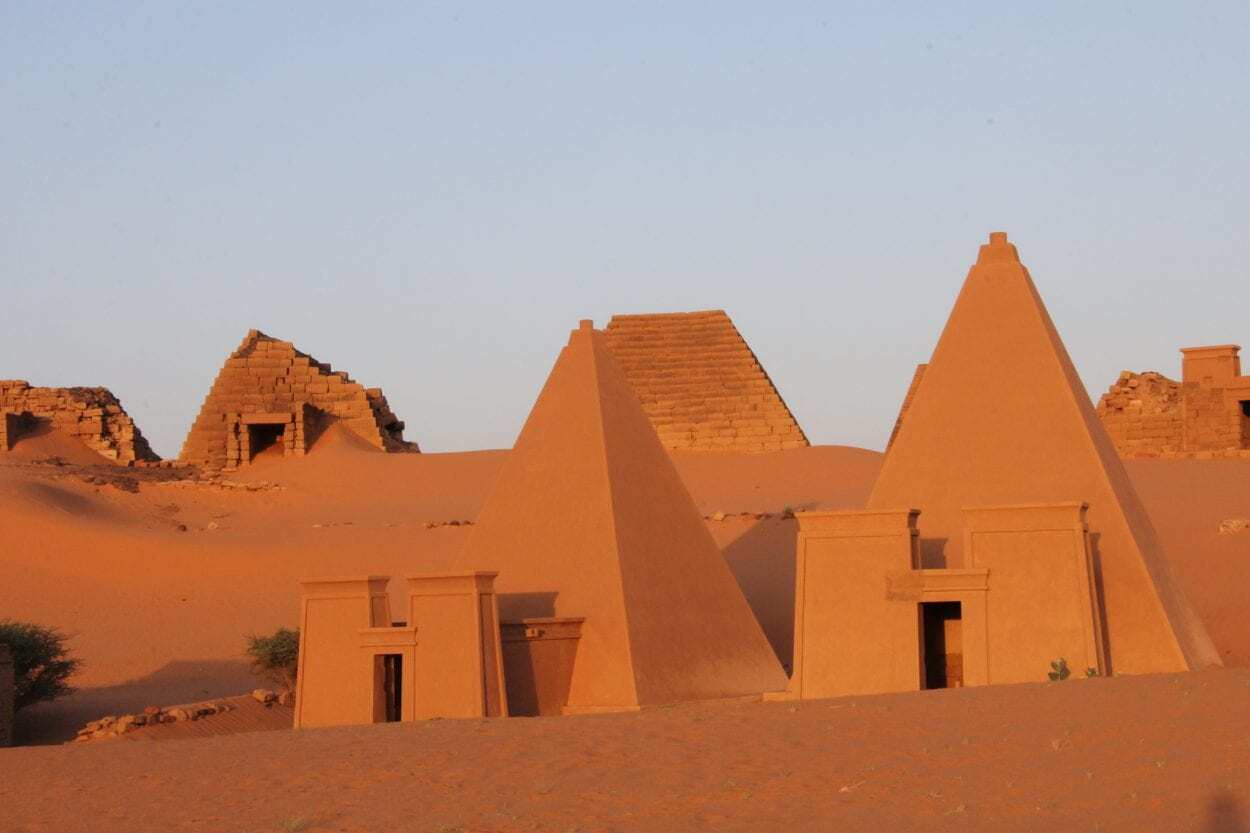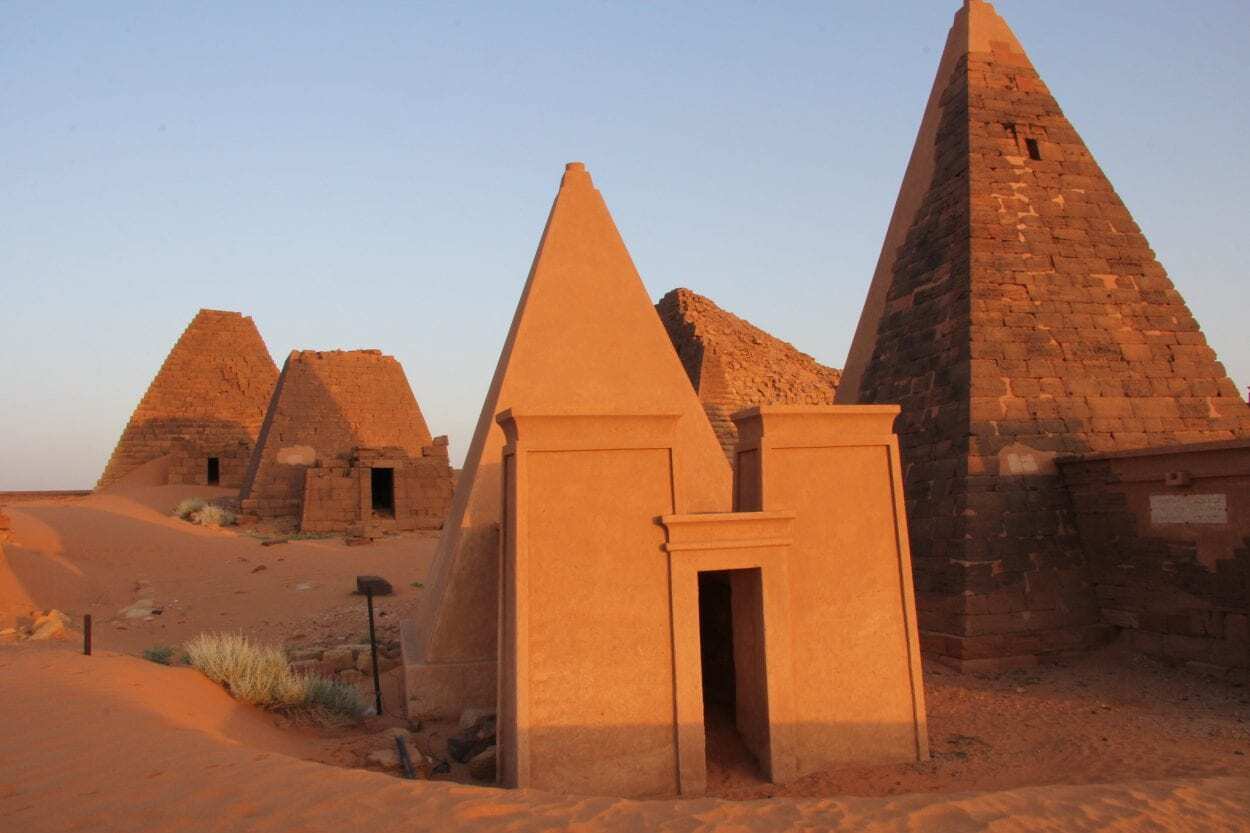Meroë, also called Medewi is an archaeological region and the ancient capital city of the Nubian Kingdom of Kush, located on the east-bank of the River Nile in Sudan.
The Kingdom of Kush was established after the Bronze Age collapse and the disintegration of the New Kingdom of Egypt. During the 8th century BC, the Kushite King Kashta and his successor, Piye, invaded Egypt and pronounced themselves Pharaohs of the 25th dynasty.
The Nubian Pharaohs created a revived period in Egyptian culture, in both religion, art and architecture, including a new phase of pyramid building not seen since the “Age of the Pyramids” during the Old Kingdom.

Meroë was founded as an administrative centre around 750 BC (although some archaeological evidence proposes as early as the 10th century BC) on the edge of Butana, historically called the Island of Meroë, second only to the capital of Napata located on the west bank of the Nile near modern-day Karima.
There were two other Meroitic cities in Butana: Musawwarat es-Sufra which served as a temple complex and Naqa/Naga. The core of the developed region of Meroë is identified by a cluster of royal burials comprising of three pyramid fields containing over two hundred pyramids.

The Nubian Kings lost power in Egypt after being defeated by the Neo-Assyrian Empire under the rule of Ashurbanipal and were expelled to Napata by Psamtik I, who also freed Egypt from Assyrian control around 664 BC.
Achaemenid raids on Napata and the desiccating of the surrounding region led to the rise of Meroë as the new centre of the consolidated Kush Kingdom and the establishment of the Meroitic period.

Because of Meroë’s distance from other civilisations, the isolation allowed the Kushites to develop their own vibrant hybrid version of Egyptian culture with their own Meroitic writing system, art, and burial practices.
After the death of Cleopatra in Egypt, the Ptolemaic dynasty’s rule of Egypt came to an end and Egypt became a new province of the Roman Empire. This brought Meroë directly to the borders of Rome, and a war ensued some time in the 1st century BC.
Following a series of successful campaigns by the Romans, a peace treaty was agreed, and a period of trade opened Meroë’s ironworks, textiles and pottery industry to the rest of the Roman Empire.

Meroë and the Kingdom of Kush began to decline around AD 300, possibly due to a collapse of internal trade with the Nile valley states, with archaeological evidence pointing to an economic and political decline. Some scholars suggest that the Kingdom was invaded around AD 330 by the Aksumites, evident by a stele erected by a foreign Aksumite King but this is inconclusive.
Header Image Credit : joepyrek





